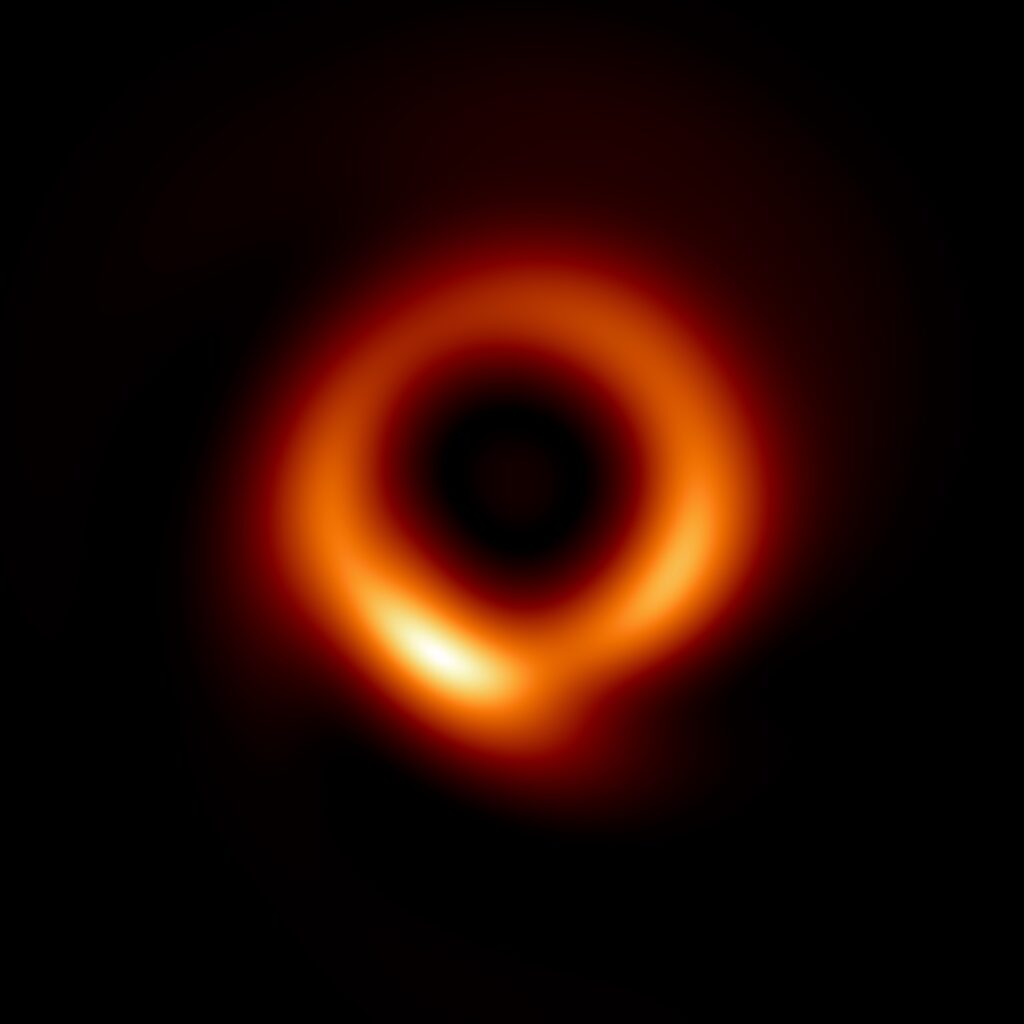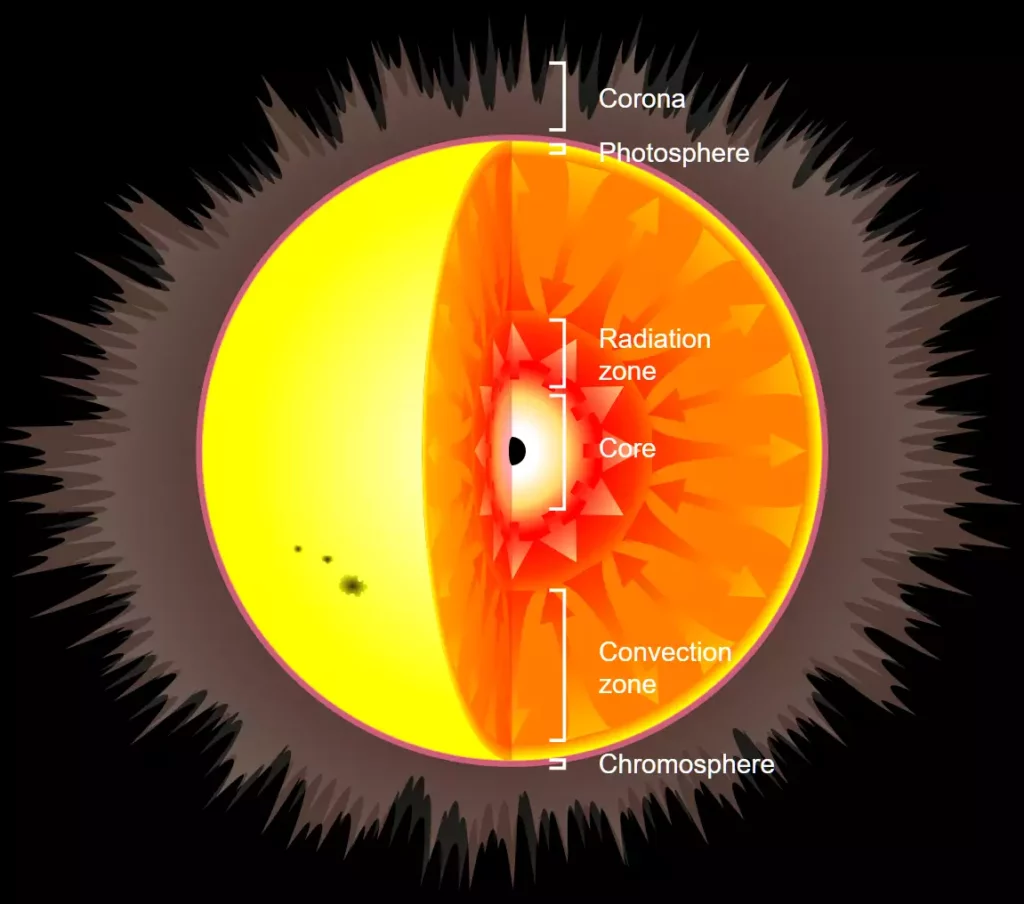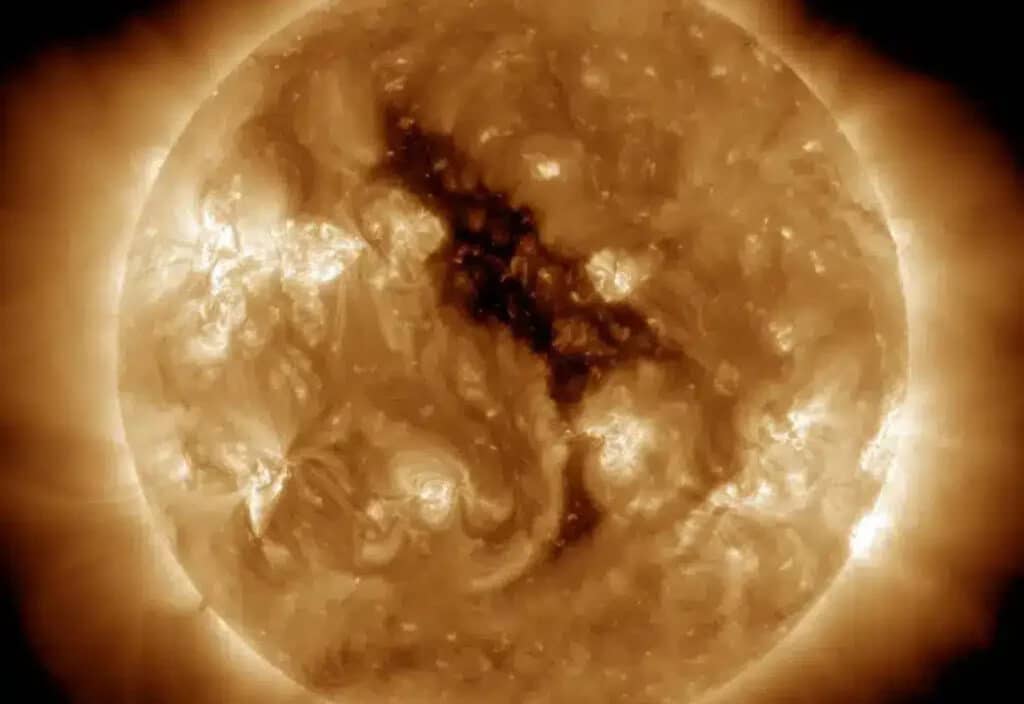Imagine a universe where the very stars we gaze upon are powered not just by nuclear fusion but by an unseen force hidden within their cores – black holes. Researchers, led by Earl P. Bellinger at the Max Planck Institute for Astrophysics, have embarked on a fascinating study exploring this intriguing possibility — including the idea that a black hole could be hiding within the sun.
Believe it or not, the concept came to Bellinger while listening to the 1994 grunge rock hit “Black Hole Sun” by Soundgarden. It turns out his idea could be more than just mindless conjecture. This theory, if proven, could revolutionize our understanding of how stars and the universe work.
“I joked with some people that it would be the dumbest ever Nobel Prize, to discover dark matter because you’re inspired by Black Hole Sun,” Bellinger quips in an interview with Science.
How Black Holes Could Hide Within Stars
Black holes are regions in space where gravity is so strong that nothing, not even light, can escape. These cosmic phenomena are usually formed from the remnants of massive stars that have collapsed under their own gravity.
At the core of Bellinger’s study lies a bold hypothesis: what if primordial black holes, remnants from the universe’s infancy, are nestled within stars, including our Sun? These black holes, formed in the universe’s first seconds, could be as tiny as an asteroid or as large as the moon and captured by newly forming stars, dubbed “Hawking stars.” They were named after Stephen Hawking, who first proposed this idea, and could have surprisingly long lifetimes and appear quite similar to normal stars in many ways.
In the context of this study, the potential existence of black holes within stars is a game-changer. If a star houses a black hole, especially one formed during the universe’s infancy, it could significantly impact the star’s life cycle. The interaction between the star’s matter and the intense gravitational pull of the black hole could lead to different evolutionary paths for the star. Depending on the black hole’s mass and the star’s properties, this could result in either a gradual consumption of the star by the black hole or a delicate balance where the black hole resides relatively passively at the star’s core. However, lighter black holes might live harmoniously within stars without major influence.

The Fate of the Sun: A New Perspective
The team’s models show that a star with a black hole at its center could live much longer than expected. For instance, our Sun could potentially have a black hole as massive as Mercury at its center without any noticeable changes in its surface properties or its luminosity, making it difficult to detect through conventional astronomical methods. However, it would influence the Sun’s internal dynamics, particularly near the core. The star’s core would become more convective due to the energy interactions and the accretion of matter onto the black hole.
Still, a black hole at its center could dim the Sun to half its luminosity over 100 million years, triggering an eventual transformation into a fully convective star. This star could then shine brightly for billions of years, appearing as a sub-subgiant or red straggler, before ultimately collapsing into a smaller black hole.

Understanding the interior of stars is a complex task. The team used advanced computer models to simulate how stars would behave if they contained black holes. They also utilized a technique called asteroseismology, akin to studying earthquakes, to analyze vibrations or “starquakes” within stars. These vibrations can reveal clues about a star’s internal structure, potentially indicating the presence of a black hole. Identifying Hawking stars requires even more sensitive measurements of these oscillations.
This research compels us to rethink our understanding of stellar evolution and the nature of dark matter. If Hawking stars are common, they could be key to understanding primordial black holes and their role in the universe.
The idea of black holes residing within stars, influencing their evolution while remaining virtually undetectable on the surface, challenges our traditional views of both stars and black holes. It opens up new possibilities in astronomy, where detecting these Hawking stars could answer fundamental questions about the universe’s earliest moments and the mysterious nature of dark matter.
While still theoretical, the concept goes to show something seemingly as impossible as a “Black Hole Sun” might be more than just a wild afterthought. “Scientists sometimes ask crazy questions in order to learn more,” says Selma de Mink, director of the stellar department at the Max Planck Institute, in a statement. “We don’t even know whether such primordial black holes exist, but we can still do an interesting thought experiment.”
The research paper is published in The Astrophysical Journal.












